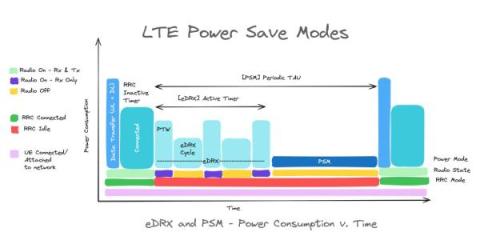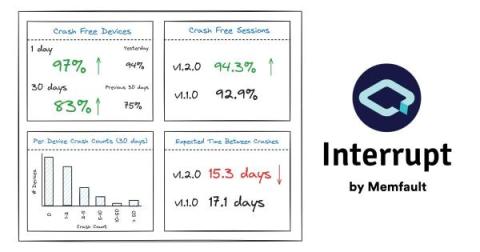Operations | Monitoring | ITSM | DevOps | Cloud
Latest Posts
Practical Zephyr - Zephyr Basics (Part 1)
This is the start of a new article series about Zephyr’s basics: It will walk you through Zephyr’s build and configuration systems West, Kconfig and devicetree.
Logging on Embedded Devices
Logging on embedded devices comes with a host of interesting and unique challenges that aren’t found on servers — devices are generally more memory, bandwidth, space, and CPU constrained, and devices often take weeks, months, or years to update, rather than days or hours.
LTE and IoT - How We Got Here
Cellular devices and networks have come a long way, from brick phones and Blackberrys to iPhones and Google Pixels. In addition to being the ubiquitous connectivity protocol that keeps the Internet at our fingertips at all times, LTE is appearing in IoT products across all industries.
Diving into JTAG - Overview (Part 1)
As the first segment of a three-part series on JTAG, this post will give an overview of JTAG to set up some more in-depth discussions on debugging and JTAG Boundary-Scan. We will dive into the intricacies of the interface, such as the Test Access Port (TAP), key registers, instructions, and JTAG’s finite state machine. Like Interrupt? Subscribe to get our latest posts straight to your inbox.
Visualizing Real-time Data With STMViewer
If you’ve ever wanted to plot data acquired on your embedded target, this article is for you. It explores common use cases for real-time data visualization using STMViewer. Say goodbye to manual, time-consuming, and error-prone data collection and display methods to speed up your debugging process.
Counting Crashes to Improve Device Reliability
The first step to making reliable IoT devices is understanding that they are inherently unreliable. They will never work 100% of the time. This is partially because we firmware engineers will never write perfect code. Even if we did, our devices need to operate through various networks and gateways, such as cellular modems, mobile phone Bluetooth applications, Wi-Fi routers, cloud backends, and more, and each of these may introduce unreliability.
MCU Peripheral Forwarding
PC applications that interact with MCUs are used by developers for a number of reasons, such as data visualization, monitoring during testing campaigns, and command and control via a GUI. In this article, we’ll explore mapping an MCU’s peripherals to your personal computer to simplify development of PC applications built for embedded systems. Like Interrupt? Subscribe to get our latest posts straight to your mailbox.
Exploring printf on Cortex-M
The C printf function is a staple of embedded development. It’s a simple way to get logs or debug statements off the system and into a terminal on the host. This article explores the various ways to get printf on Cortex-M microcontrollers.
A Simple Scheduler via an Interrupt-driven Actor Model
Using an RTOS is often a tradeoff between the ease of decomposing tasks, with the complexity of the scheduler itself. There exists a middle ground between highly complex systems that may require an RTOS, and simpler ones that can be easily modeled using a super loop.Since ARM is the most popular embedded CPU and almost every ARM processor has a hardware scheduler, it would be interesting to make a compact framework utilizing these features.




